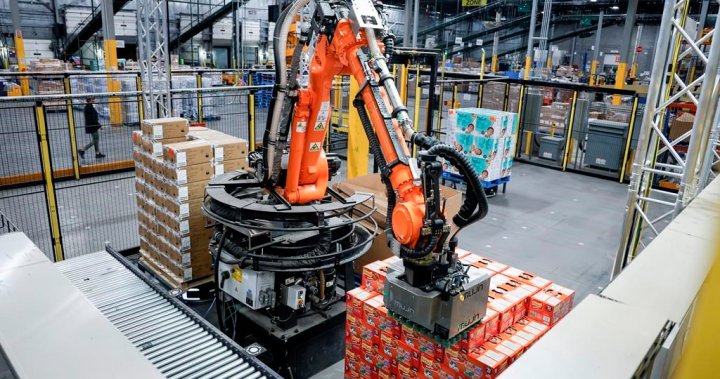In a Calgary warehouse operated by Walmart Canada, a fleet of robots is revolutionizing the supply chain industry. The robots work together to transport merchandise, label products, and streamline the process of getting products from delivery trucks into the facility. This automation has reduced the time it takes to handle merchandise by 90%, and Walmart Canada plans to expand this technology to their distribution centers in Mississauga and Cornwall, Ontario over the next five years. The company is excited about the impact that robots have had on their operations and is looking forward to implementing them in other sites.
Robots offer numerous benefits to companies like Walmart, as they do not require breaks, do not have restrictions on working hours or lifting capacities, and do not require benefits such as vacation time or overtime pay. Additionally, robots have improved safety and ergonomics in the warehouse by reducing the risk of injuries and repetitive strain on human workers. Walmart Canada’s Vice President of Supply Chain, Matt Kelly, emphasizes the importance of ensuring the safety and well-being of their associates while also harnessing the efficiency and productivity that robots bring to the table.
While the implementation of robots in the supply chain industry offers cost savings and operational efficiencies for companies, there are concerns about the impact on jobs. Statistics Canada estimated that a significant percentage of Canadian workers are at risk of having their jobs transformed or replaced by robots. However, Kelly emphasizes that Walmart’s robots have not eliminated the need for human workers and have actually created new jobs. Other companies that have adopted robotics have also seen increases in their workforce, challenging the notion that automation will lead to job losses.
Retail industry experts like Liza Amlani recognize the benefits of implementing technology like robots, as it can lead to cost savings that can be passed on to customers. The global retail robotics market is projected to reach a value of US$105.95 billion by 2029, driven by the increasing adoption of automation in various retail operations. Companies like Sobeys Inc. and Pizza Hut have already integrated robots into their processes, showcasing the diverse applications of robotics in the retail sector. With competition from companies like Amazon driving the adoption of technology, Walmart is focused on continuous innovation to stay ahead in the rapidly evolving industry.
Despite the advancements in robotics and automation, Walmart is constantly researching and testing new technologies to ensure they can handle the diverse range of products that flow through their supply chain. The company does not benchmark its technology against competitors but acknowledges the influence of rivals like Amazon, who have successfully leveraged robots to drive efficiencies in their warehouses. While Walmart teases the introduction of more robots in their upcoming facilities, the focus remains on innovation and finding technologies that will optimize inventory management and ensure products are readily available to customers. The goal is to continue to adapt and evolve in a competitive market where technology plays an increasingly vital role in shaping the future of retail.















